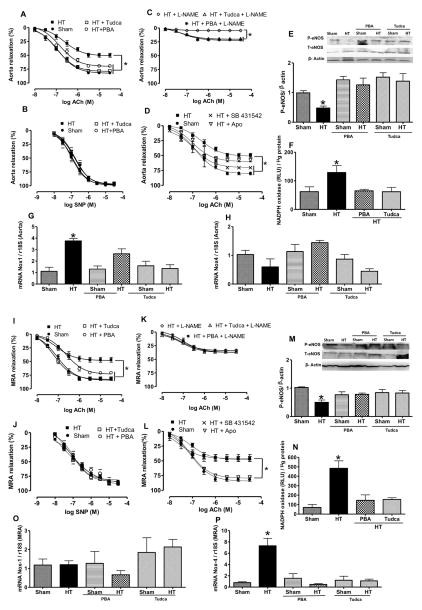Figure 4.
A, B, C, I, J , and K, Endothelium-dependent and independent relaxation in response to acetylcholine (Ach) and single-nucleotide polymorphism (SNP), respectively, in aorta and mesenteric resistance arteries (MRA) with and without L-NAME in all groups, n=10. E and M, Western blot analysis and quantitative data for P-endothelial NO synthase (eNOS), T-eNOS, and β-actin in aorta and MRA in all groups, n=5. D and L, Endothelium-dependent relaxation in response to ACh with and without apocynin (Apo) and SB431542 in aorta and MRA in all groups of mice, n=5. F and N, Nicotinamide adenine dinucleotide phosphate (NADPH) oxidase activity in aorta and MRA in all groups of mice, n=5. G, H, O, and P, NADPH oxidase 1 (Nox1) and Nox4 mRNA levels, normalized to 18S ribosomal RNA (rRNA), in aorta and MRA from all groups, n=6. *P<0.05 for HT vs control, control+PBA, control+Tudca, HT+PBA, and HT+Tudca. HT indicates hypertension; PBA, 4-phenylbutyric acid; Tudca, taurine-conjugated ursodeoxycholic acid.

